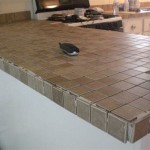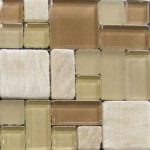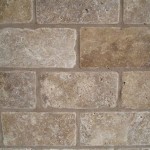What Are The Disadvantages Of Vinyl Tile Flooring
Vinyl tile flooring has gained significant popularity as a cost-effective and aesthetically versatile option for residential and commercial spaces. Its durability, water resistance, and ease of installation make it an attractive choice for many property owners. However, before committing to vinyl tile, it is crucial to understand its limitations and potential drawbacks. While offering numerous advantages, vinyl tile flooring also presents several disadvantages that should be carefully considered to ensure it aligns with one's specific needs and expectations. This article will explore the key disadvantages associated with vinyl tile flooring.
Susceptibility to Damage and Wear
One significant disadvantage of vinyl tile flooring is its relatively low resistance to certain types of damage. While vinyl is generally durable, it is susceptible to scratches, dents, and tears if subjected to heavy objects, sharp items, or abrasive materials. Furniture legs, pet claws, and dropped items can easily leave visible marks on the surface. In high-traffic areas, the wear layer can gradually erode, leading to fading or peeling. This can be particularly noticeable in areas exposed to direct sunlight, which can accelerate the deterioration process. The susceptibility to damage necessitates the implementation of preventive measures, such as using furniture pads, placing mats at entryways, and employing gentle cleaning methods. Failure to take such precautions can result in premature wear and the need for replacement.
Furthermore, certain types of vinyl tile are more vulnerable than others. Thinner, less expensive options often have a thinner wear layer, making them more prone to damage. While high-quality, thicker vinyl tiles offer better resistance, they come at a higher cost. The choice between affordability and durability is a crucial consideration when selecting vinyl tile. It is also important to note that repairing damaged vinyl tile can be challenging. Minor scratches may be masked with specialized cleaning products, but severe damage often requires replacing the affected tile, which can be time-consuming and costly if the original batch is no longer available.
The embossing or texturing on certain vinyl tiles can also contribute to wear and tear. While textured surfaces can enhance the aesthetic appeal and provide slip resistance, they can also trap dirt and debris, making them more difficult to clean. The textured areas may also be more susceptible to wear, leading to uneven fading over time. Therefore, selecting a vinyl tile with an appropriate level of texture for the intended use is essential to minimize the impact of wear and tear.
Potential for Off-Gassing and Indoor Air Quality Concerns
A less obvious but nonetheless significant disadvantage of vinyl tile flooring is the potential for off-gassing of volatile organic compounds (VOCs). Many vinyl products, especially those manufactured with lower-quality materials, release VOCs into the air, which can negatively impact indoor air quality. VOCs are chemical compounds that can cause various health problems, including headaches, dizziness, respiratory irritation, and allergic reactions. Individuals with asthma or other respiratory conditions may be particularly sensitive to VOCs.
The off-gassing process is most pronounced during and immediately after installation. The adhesive used to install the vinyl tiles can also contribute to VOC emissions. To mitigate this risk, it is crucial to select low-VOC vinyl tile flooring and adhesives. Look for products that are certified by reputable organizations, such as FloorScore or GreenGuard, which indicate that they meet stringent emissions standards. Proper ventilation during and after installation is also essential to accelerate the dissipation of VOCs. Opening windows and using air purifiers can help improve indoor air quality.
The long-term effects of VOC exposure are still being studied, but concerns remain regarding potential chronic health problems. Individuals who spend significant time indoors, such as children and those with pre-existing health conditions, may be at higher risk. While the levels of VOCs typically decrease over time, some emissions may persist for months or even years. Therefore, prioritizing low-VOC options and maintaining good ventilation practices are crucial for minimizing the potential health risks associated with vinyl tile flooring.
Another factor to consider is the presence of phthalates in some vinyl products. Phthalates are chemicals used to make vinyl more flexible, but they have been linked to various health concerns, including hormonal disruption and developmental problems. Although some manufacturers have phased out the use of phthalates in their products, it is essential to check the product specifications to ensure that the vinyl tile is phthalate-free. Choosing alternative flooring options, such as linoleum or engineered hardwood, can also eliminate the risk of VOC and phthalate exposure.
Environmental Impact and Sustainability Concerns
From an environmental perspective, vinyl tile flooring presents several sustainability challenges. The primary component of vinyl tile is polyvinyl chloride (PVC), a synthetic plastic polymer derived from petroleum. The extraction, processing, and manufacturing of PVC require significant energy and resources, contributing to greenhouse gas emissions and environmental pollution. The production of PVC also generates hazardous waste, which can pose risks to human health and ecosystems.
The disposal of vinyl tile flooring at the end of its lifespan is another environmental concern. PVC is not biodegradable and can persist in landfills for centuries. Incinerating vinyl waste can release harmful dioxins into the atmosphere, further exacerbating pollution. While recycling programs for vinyl products are becoming more common, the infrastructure for recycling vinyl tile is still limited in many areas. Therefore, a significant portion of discarded vinyl tile ends up in landfills or incinerators.
To mitigate the environmental impact of vinyl tile flooring, it is crucial to consider sustainable alternatives and responsible disposal practices. Opting for vinyl tiles made from recycled content can reduce the demand for virgin PVC and minimize waste. Look for products that are certified by reputable environmental organizations, such as LEED or Cradle to Cradle, which indicate that they meet specific sustainability criteria. Proper maintenance and care can extend the lifespan of vinyl tile, reducing the need for frequent replacement. When the tile eventually needs to be replaced, explore recycling options or consider donating it to organizations that can reuse it.
Furthermore, it is important to consider the environmental impact of the adhesives and cleaning products used with vinyl tile flooring. Choose low-VOC adhesives and eco-friendly cleaning solutions to minimize pollution and protect indoor air quality. Educating oneself about the environmental footprint of different flooring options and making informed choices can contribute to a more sustainable building environment. Alternatives to vinyl tile, such as linoleum, cork, and bamboo, offer more sustainable options with lower environmental impacts.
Vinyl tiles, while aesthetically pleasing and affordable, possess specific limitations that potential buyers must be aware of. Despite the benefits of water resistance and ease of maintenance, its susceptibility to damage, possible off-gassing and harmful environmental impact are reasons to consider alternatives before committing to vinyl tile flooring.

Vinyl Flooring For Bathrooms Pros And Cons

Advantages Disadvantages Of Vinyl Plank Flooring Floorings

Disadvantages Of Vinyl Flooring Know Everything In Detail Contractor

8 Disadvantages Of Vinyl Plank Flooring

Vinyl Flooring Pros And Cons Forbes Home

Biggest Advantages Disadvantages Of Vinyl Plank Flooring

Vinyl Flooring And Floor Tiles The 8 Pros Cons

The Risks And Disadvantages Of Vinyl Flooring City Floor Supply Blog

Pros Cons Of Vinyl Plank Flooring Floor Techie

Vinyl Flooring Suitability Advantages And Disadvantages Happho
Related Posts








